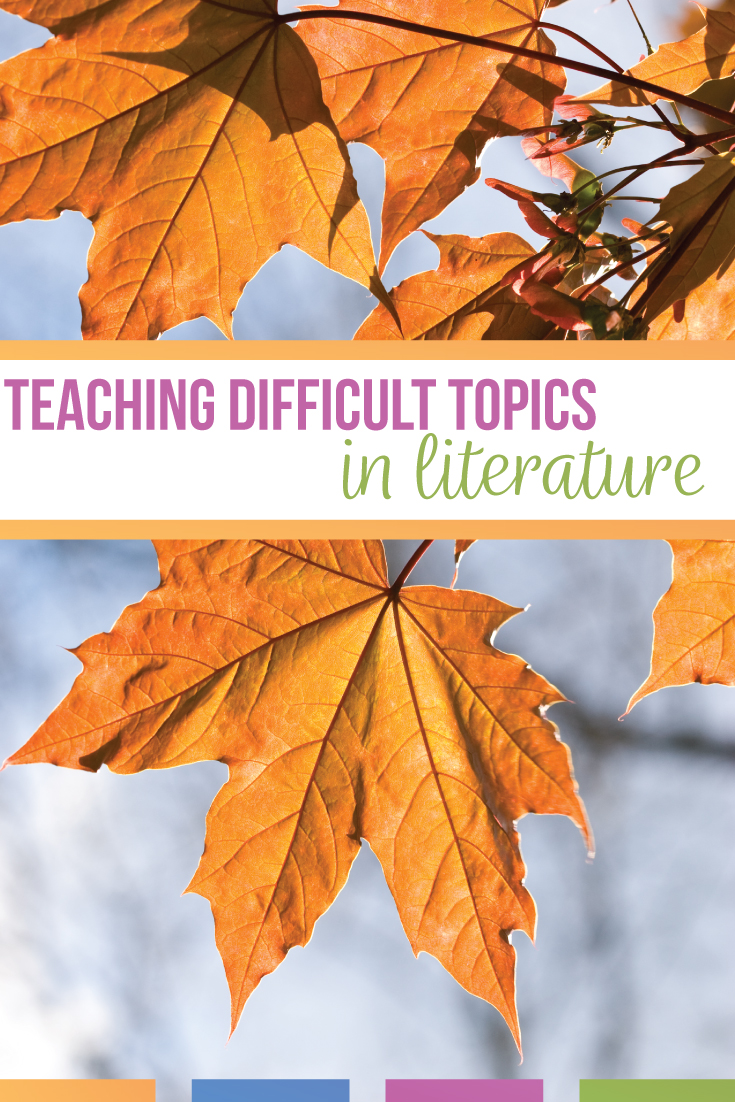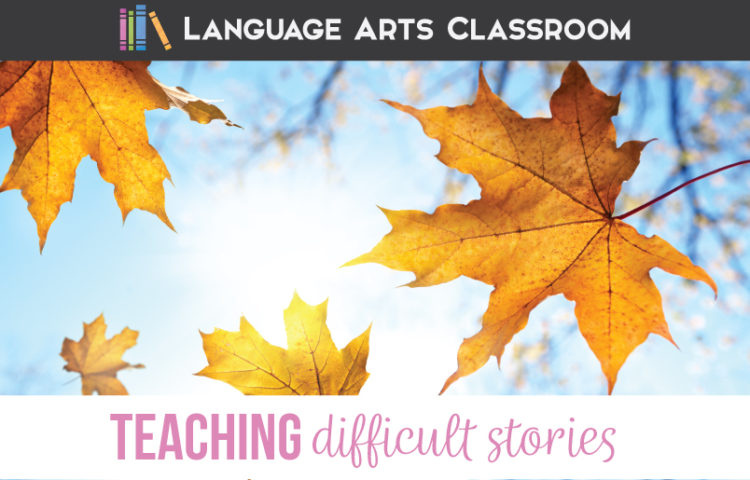You are probably teaching literature with examples of child abuse. I began looking at literature this year through a trauma-educated lens. It was a disturbing glimpse.
A dozen or so posts ago, I wrote about social emotional learning while keeping in mind that some students bring trauma with them to the classroom. Part of the reason I wrote that post dealt with teachers (with positive intentions) building SEL activities that harmed students. As my school and state continues to train teachers for trauma sensitive classrooms, I continue looking at all areas of my classroom.
Sitting through videos, my eyes fell upon a stack of books.
Recognizing literature with child abuse.
Unfortunately, a cursory glance through my bookshelf found popular books, frequently taught books with examples of child abuse.
I found:
- To Kill A Mockingbird: Jack, Scout’s Uncle, beats her with a switch.
- The Book Thief: Rosa, Liesel’s foster mother, beats her with an assortment of tools.
- I Know Why the Caged Bird Sings: Maya’s grandmother beats her for saying the wrong word.
Now, I know that time periods, cultural beliefs, and religious upbringings all contribute to people beating children. Still, our literature contains many instances of child abuse, even from infancy:
There was an old woman who lived in a shoe, who had so many children she didn’t know what to do.
She gave them some broth without any bread; And whipped them all soundly and sent them to bed.
In this post, I am not discussing the factors and beliefs of child abuse, mostly because other researchers are far better equipped with that discussion. Some literature contains child abuse; some of it is central to the story while other stories simply address the abuse as part of life.
How do we ELA teaches handle this, especially concerning guidelines for microaggressions?

Teaching literature with examples of chid abuse.
First, I searched JSTOR for ideas on teaching literature with examples of child abuse, and I cannot find any. Next, I searched ERIC and while I found helpful data about child abuse, I couldn’t find guidelines for teaching literature that contains child abuse. I struggle to think there is no research!
(If you know of any, I would appreciate some links or if you know of a professional who would agree to an interview, I would happily share my findings with my audience.)
Second, I want to consider our conversations about abuse in literature with students. This year when I taught literature with abuse, I started with facts. What is child abuse?
In Supporting Victims of Child Abuse, the authors cover four types of abuse. The authors define physical abuse as::
Nonaccidental physical injury to a child. Examples include slapping, shaking, hitting, kicking, burning, pushing, smothering, restraining (physical or chemical), and torture (may be related to ritualistic abuse and/or satanic worship). A few forms of abuse may be attributed to lack of knowledge on the part of the parent—for instance, neurological damage can result from shaking a child. Physical abuse should be suspected if the following are present: bruises, burns, broken bones, and/or internal injuries. Further, a child who appears fearful or who startles easily may be the victim of abuse.
Naming the abuse, recognizing that the abuse in a story is wrong, can validate students’ feelings as they read the examples. I’ve always argued that the proper vocabulary, the proper identification matters. Saying that these adults were “disciplining” is not accurate.
Additionally, secondary students absolutely understand what they are reading. As a teacher, as a positive role model, I want them to know that they should be safe. I am honest with my secondary students.
Another approach I took was to show them a fact sheet like this. Many students told me they have seen similar ones, which makes sense! Some of my students are lifeguards, babysitters, daycare workers, or other employees who receive training about child abuse. We discuss how child abuse affects people for life and how all minors should be safe.
If I am teaching literature with examples of child abuse, I unequivocally want my students to know that behavior is wrong.
Talking about child abuse with coworkers.
I am not a therapist, but I am a mandated reporter. Like thousands of teachers, I have had to report suspected child abuse. That fact combined with the importance of trauma informed schools means we educators have more work. If no research on the teaching of child abuse in literature exists, we teachers have a responsibility to raise alarms.
Unfortunately, adults don’t always like to discuss child abuse:
“Most adults who have not been abused would rather not accept the reality of the number of children who have been abused. Many prefer to think of physical injury, terrorizing, and psychological torture as atrocities that only happen to hostages imprisoned in foreign countries.”
Two facts might interfere with the teaching of stories with child abuse. If adults (teachers, coaches, administrators) don’t realize the problem of child abuse, and if adults don’t have research that guides them in their teaching, they might avoid the discussion altogether.
Child abuse is a social inequality issue, and this problem matters a great deal. Once we realize that, we can approach department meetings and one-on-one conversations with colleagues with that fact.
Thinking of the future.
We are teachers, and we want to help all students. I get it. We all know the feeling of being the only person bringing up an uncomfortable topic at a meeting.
If you are teaching literature with examples of child abuse, please tell students that abuse was wrong. Explain that the time period maybe permitted such treatment, but that child abuse is not acceptable under any circumstances. Do not allow dangerous discussion to happen, like students explaining when it is acceptable for adults to beat children. Think of the message those discussions will send to your students, perhaps your most vulnerable students.
Consider about what silence on the matter of child abuse in literature brings to abused children.
Hopefully, we teachers can find guidance and support as trauma-informed schools become more prevalent. I would love more guidance for teaching literature with examples of child abuse. Please leave links, names, and ideas in the comments.

